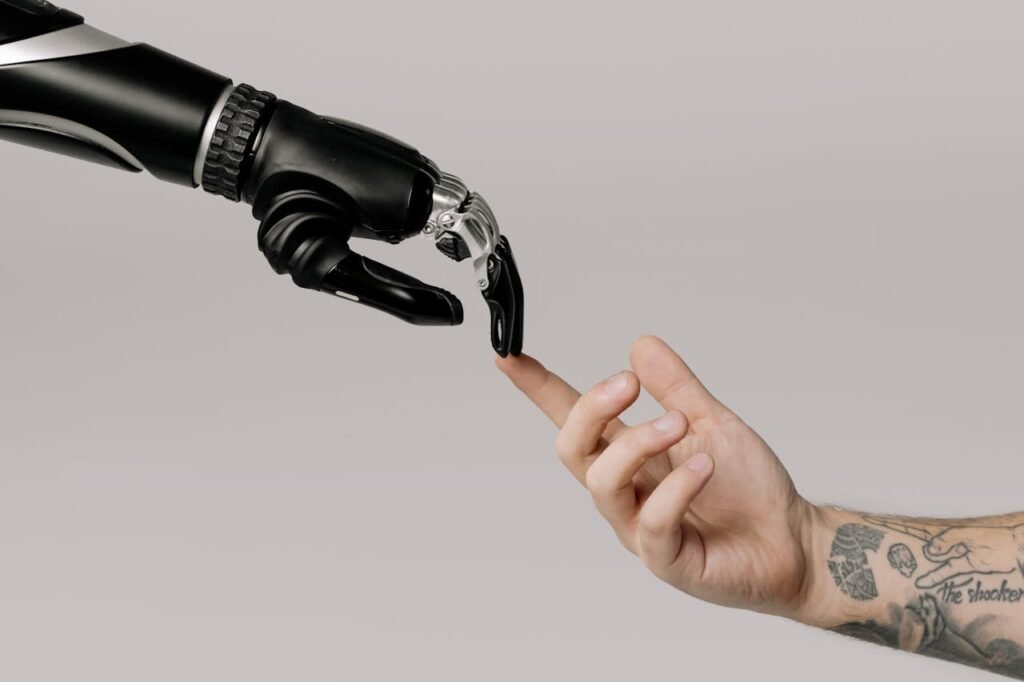Losing a limb changes everything. It affects how you move, how you feel, and how you live each day. But with the right tools, support, and therapy, people can rebuild their strength—and their confidence.
One tool that has quietly helped many during recovery is Electrical Muscle Stimulation (EMS). It’s not loud or flashy. But it works. It helps muscles stay active. It helps people connect with their bodies again. And it plays a powerful role in preparing for prosthetics like our Grippy™ Bionic Hand.
At RoboBionics, we’ve seen EMS therapy open doors that once felt shut. In this article, we’re sharing real stories of real people who used EMS as part of their recovery journey. These stories are honest, raw, and full of heart. You’ll hear about their struggles, their wins, and the small steps that added up to big change.
These are not just stories. They’re proof that recovery is possible, and that no one has to walk this path alone.
Let’s begin.
Rekha’s Story: Finding Strength Again After a Workplace Accident
The Day Everything Changed
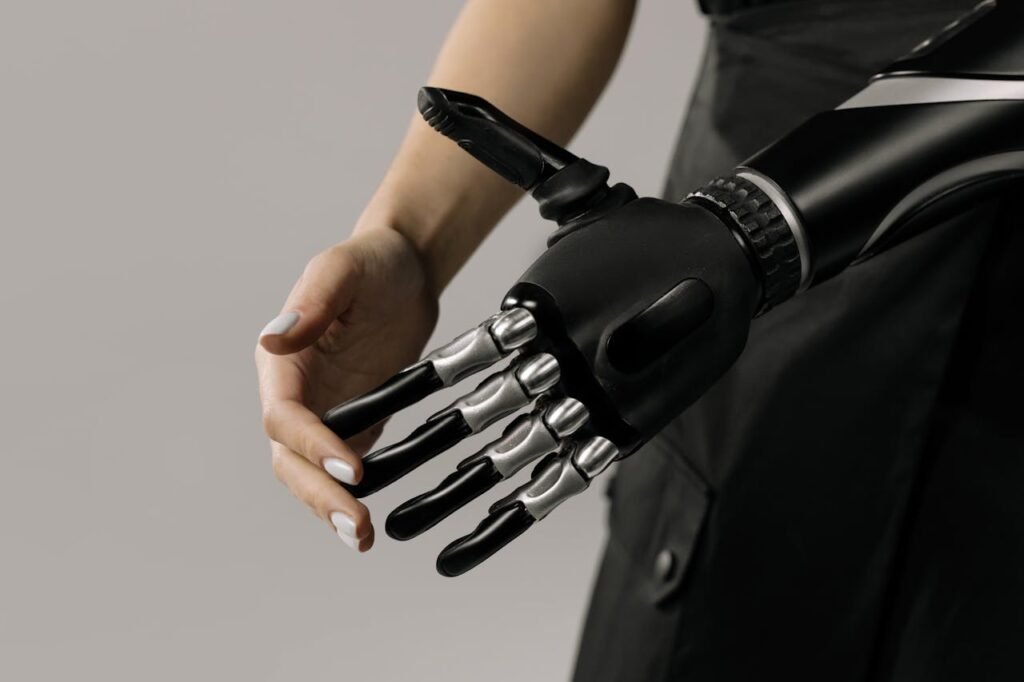
Rekha was 38 when she lost her right hand in an industrial accident at a textile factory in Surat. It happened so fast. One moment she was adjusting a thread spool, and the next, everything went dark.
She spent weeks in the hospital. The hardest part wasn’t the pain. It was the silence of her arm—how it didn’t move the way it used to.
She said, “I felt like my body had forgotten me.”
Discovering EMS
During her early rehab, her physiotherapist introduced her to EMS therapy. At first, she was scared. She didn’t know what to expect. She thought the shocks would hurt.
But the first session was gentle. She felt a slight twitch in her forearm. It was small, but it gave her hope.
“I thought, if my muscle can still move… maybe I can still do something,” Rekha said.
Building a Routine
Rekha began daily EMS sessions. Her therapist placed the pads carefully on her forearm, over the muscles that once controlled her fingers.
At first, there wasn’t much movement. But by the third week, she could feel the contraction grow stronger. EMS became part of her day—like brushing her teeth or making tea.
“It was my quiet time,” she said. “Just me and my muscles, learning to trust each other again.”
The Turning Point
After six weeks, Rekha was introduced to the Grippy™ Bionic Hand. Because she had kept her muscles active with EMS, her myoelectric signals were strong.
The bionic hand responded beautifully. She could open and close it. She picked up a spoon. Held a glass. Wrote her name.
Tears rolled down her face the first time she fed herself.
“I wasn’t just using a machine. I was living again.”
Javed’s Journey: Reclaiming Independence After a Road Accident
The Loss of a Dream
Javed was a young delivery driver in Mumbai. He loved riding his bike. He loved the freedom of the road.
But one rainy evening, a truck skidded into his lane. His left arm was crushed. The doctors had to amputate just below the elbow.
He was 26.
“I thought my life was over,” he said. “How could I work? How could I ride? How could I live?”
Trying EMS for the First Time
Javed was hesitant when his prosthetic center mentioned EMS. He didn’t want to be poked or wired up.
But they explained it simply. The small electric pulses would help wake up his muscles. It would prepare his arm for using a myoelectric prosthetic.
He agreed to try.
The first few sessions were tough. He didn’t feel much. He got frustrated.
But a kind therapist told him to treat it like watering a plant. “You don’t see the roots grow,” she said, “but they are growing.”
Progress You Can’t Always See
After a month of EMS, Javed noticed changes. His stump felt stronger. His posture improved. His confidence returned.
He was able to grip things with his bionic hand. Small things at first—keys, paper, coins. But they added up.
“I didn’t feel like I was missing something anymore,” he said. “I felt like I had something new.”
Life Today
Now Javed works at a call center. He types with both hands—one natural, one bionic. He takes public transport. He helps around the house.
He even rides a modified scooter.
“EMS helped me start over,” he said. “It gave me back a part of myself.”
Anita’s Path: Healing Emotionally Through Physical Progress
A Different Kind of Amputation
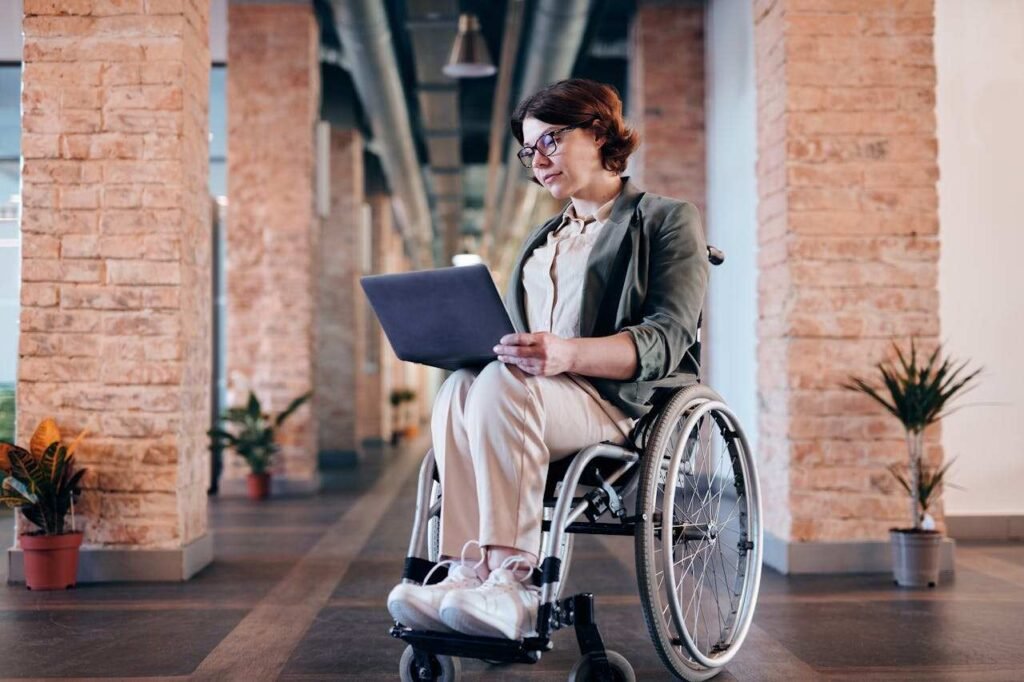
Anita was born with a limb difference. She had only part of her left hand. Growing up, she learned to do everything with one hand.
She never felt limited—until she started college. Simple things like opening bottles, tying her hair, or taking notes fast made her feel left out.
She heard about RoboBionics and came in for a consultation. She was a good fit for a mechanical assistive device. But her arm muscles were underused.
That’s when EMS entered her life.
Learning to Feel Her Muscles
Because she had never used certain muscles before, EMS felt strange. At first, it was just a buzz. Then, she felt a flicker.
Her therapist cheered. “That’s your muscle waking up!”
Slowly, Anita learned how to control the flicker. She paired the pulses with tiny movements. She practiced every day.
After three months, her arm looked different—firmer, more active.
The Big Shift
The biggest change wasn’t physical. It was emotional.
Anita said, “Before EMS, I didn’t think my arm could do anything. Now I know it can.”
With her mechanical hand, she now ties her hair. Carries her bag. Even paints in her free time.
“EMS didn’t just train my muscles. It changed how I saw myself.”
Ramesh’s Comeback: From Phantom Pain to Peace
Haunted by the Past
Ramesh, a retired school principal from Pune, lost his right arm above the elbow due to complications from diabetes. The surgery went well, but something else lingered—phantom pain.
He described it as “fire under the skin.” It woke him up at night. It followed him through his day. Medication didn’t help much.
“I felt like my mind was being tricked,” he said. “I couldn’t fight something I couldn’t see.”
EMS as a Pain Reliever
His doctor suggested trying EMS—not for muscle movement, but for nerve relief. At first, Ramesh didn’t understand how it would help.
But after his first low-frequency EMS session, he felt something shift. The buzzing didn’t cure the pain, but it softened it.
Over weeks, the episodes of phantom pain reduced. He could sleep better. He started to enjoy walks again.
“EMS didn’t erase the ghost,” he said, “but it helped me stop fearing it.”
Finding Purpose Again
As his comfort grew, so did his energy. He joined a community support group. He began tutoring kids in his neighborhood.
For Ramesh, EMS was more than therapy—it was peace.
“It gave me rest,” he said. “And with rest, I found strength again.”
Kavita’s Confidence: Preparing for Her Bionic Hand
A Life Interrupted
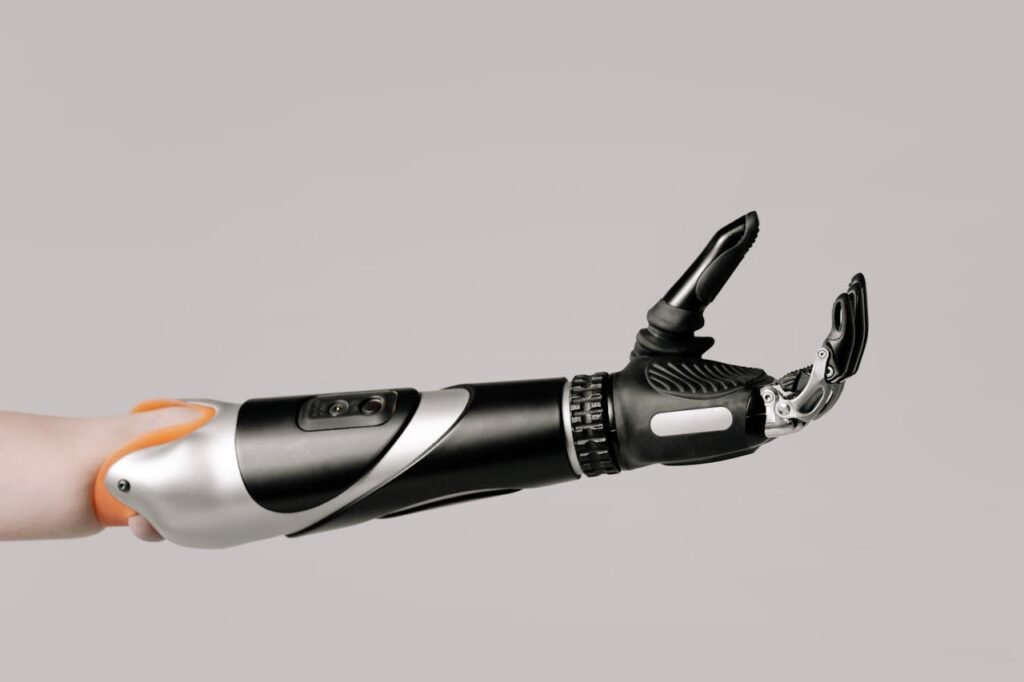
Kavita was a dancer. Graceful, focused, always in motion.
But a car accident at 32 left her without her left hand. She didn’t cry much at the hospital. But months later, when she tried to tie her saree and couldn’t—she broke down.
“It felt like the dance had ended,” she said.
Stepping Into EMS
Her rehab team introduced her to EMS early on. They said her muscles needed to stay active to use a bionic hand later.
The first time she felt her muscle twitch from the electrodes, she cried again—but this time, it was joy.
“That flicker meant my body still had rhythm,” she said.
Therapy in Rhythm
Kavita treated EMS like rehearsal. She did her sessions to soft music. She practiced holding shapes with her stump. When the bionic hand arrived, she was ready.
Her grip was firm. Her control was natural. She could flow from one gesture to the next—just like she used to on stage.
Dancing With a New Partner
Today, Kavita teaches classical dance to children. She doesn’t hide her bionic hand. In fact, her students think it’s “super cool.”
“EMS helped me train for this new life,” she said. “It reminded me that movement doesn’t end. It just changes form.”
Mohan’s Mission: Helping Others After His Recovery
A Farmer’s Loss
Mohan was a farmer in a small village in Maharashtra. One morning, while fixing a faulty motor in the field, his arm got pulled into the machine.
The doctors had to amputate above the elbow.
He worried more about his family than himself. “Who would plough the land? Who would drive the tractor?” he asked.
He didn’t speak much during his hospital stay. Until someone mentioned EMS.
From Quiet to Curious
At first, Mohan thought EMS was only for city people. But when the therapist showed him how it worked, he was curious.
He agreed to try it. The feeling of his upper arm muscles moving gave him a strange kind of relief.
“I thought, maybe this arm still has life,” he said.
Steady Recovery
His EMS sessions were quiet, steady. He didn’t talk much. But he never missed a day.
After a few months, he was fitted with a prosthetic that responded to his bicep and shoulder movement. It wasn’t perfect—but it worked.
He could lift small tools. Carry water buckets. Even drive again.
His wife said, “He smiled for the first time in months after using that arm.”
Giving Back
Today, Mohan speaks to other amputees in nearby villages. He tells them EMS isn’t some high-tech trick. “It’s just a wire and a will,” he says.
He shows his arm. He shows what it can do.
And most importantly—he shows that healing is possible, even in the smallest corners of the country.
Sana’s Strength: Overcoming Emotional Barriers with EMS
A Silent Struggle
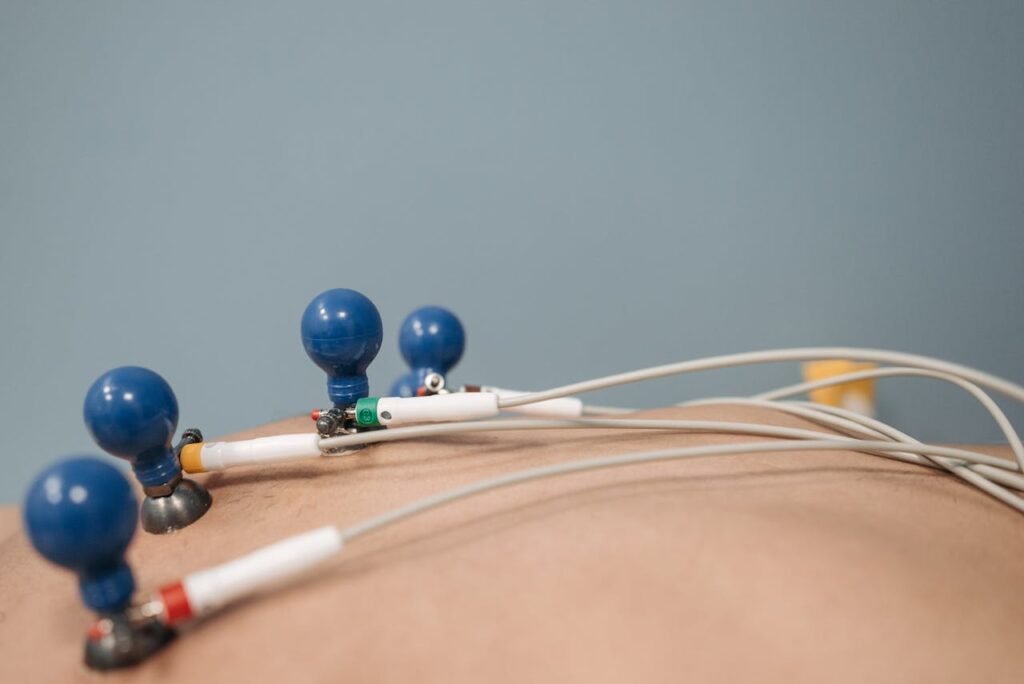
Sana, a 19-year-old college student from Hyderabad, lost her hand in a pressure cooker explosion at home. The injury was traumatic, but the emotional wounds were harder to heal.
She withdrew from her classes, stopped talking to her friends, and avoided looking at mirrors.
“I didn’t feel like myself anymore,” she said quietly. “I didn’t want anyone to see me.”
A Gentle Introduction to EMS
Her prosthetist suggested EMS—not just to keep her muscles active, but to help her feel connected to her body again.
The first session was short. The therapist let her hold the controller, gave her the power to choose the level, and explained every step.
It was the first time since her accident that she felt in control.
Bit by Bit, Building Confidence
Sana began attending EMS sessions regularly. She liked how it gave her something to focus on—something practical.
As her muscles responded, so did her spirit. She started sitting straighter. She began asking questions.
She even took a selfie one day after therapy—her first since the accident.
“EMS helped me stop hiding,” she said. “It gave me a reason to show up.”
Returning to College
After several months, Sana was ready for her Grippy™ Bionic Hand. She wore long sleeves at first. Then half-sleeves. Then no sleeves.
Today, she gives talks at her college about tech in healthcare. She tells others not to wait to feel ready.
“Start small,” she says. “Even if it’s just a tiny pulse. That’s how strength begins.”
Vijay’s Determination: Blending EMS with Traditional Healing
Caught Between Two Worlds
Vijay, a 50-year-old schoolteacher in Chennai, lost part of his hand in an electrical accident. Coming from a family rooted in traditional Ayurveda, he was skeptical of modern treatments.
But when his nephew told him about RoboBionics and EMS therapy, he agreed to attend one session—just to observe.
“I thought, if it doesn’t harm, maybe it can help,” he said.
A Surprising Connection
During his first EMS session, Vijay was quiet. But when the electrodes made his muscle twitch, his eyes lit up.
He said it reminded him of energy points used in massage and yoga. “It’s like the nerves were waking up,” he explained.
He agreed to try more sessions, combining EMS with his daily Ayurvedic treatments like oil massages and herbal compresses.
A Blended Path to Recovery
Vijay created his own unique blend of East and West. EMS in the morning, ayurvedic oils in the evening, and stretches throughout the day.
His recovery surprised his family—and himself.
He didn’t just heal. He grew stronger. He became more open to new ideas.
“EMS didn’t replace my beliefs,” he said. “It added to them.”
Leveraging EMS Therapy Strategically: What Clinics and Centers Can Do
EMS is More Than Rehab—It’s Relationship Building
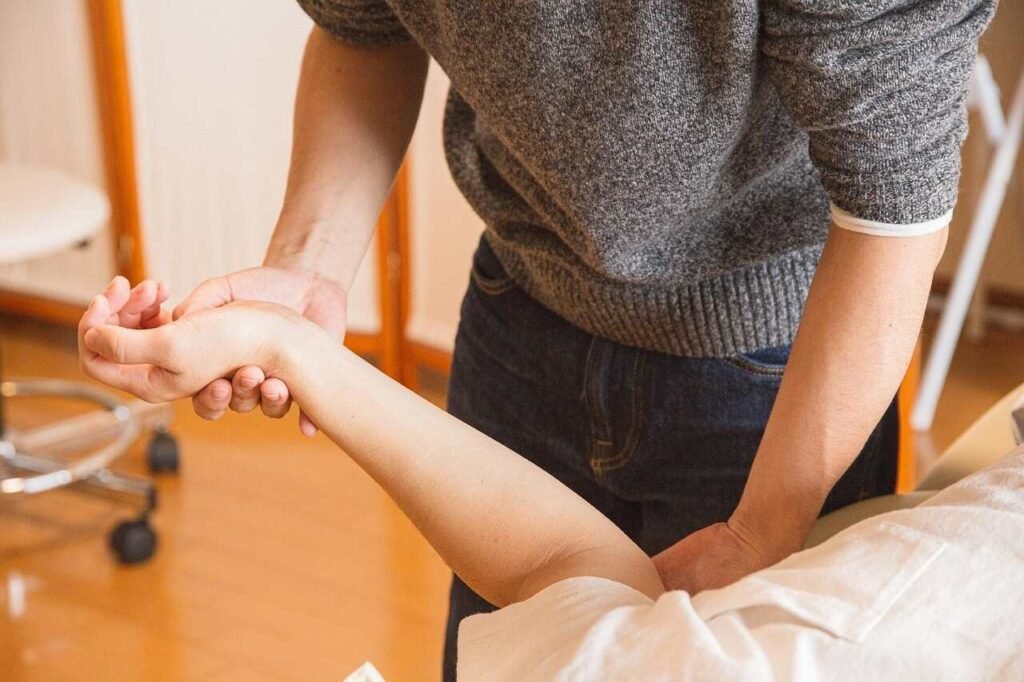
For many rehabilitation clinics and prosthetic providers, EMS therapy is often treated as just one step in a larger treatment plan. But here’s what most miss—it’s also a powerful trust-building tool.
When a patient first arrives after amputation, they’re vulnerable, uncertain, and often overwhelmed. Offering EMS as a soft starting point—something gentle, non-invasive, and low-pressure—helps create emotional safety.
Even if prosthetic fitting is weeks or months away, EMS can begin on day one. This keeps the patient engaged, active, and optimistic—and gives your business more touchpoints to build a relationship that lasts beyond the device fitting.
Create EMS-Focused Pre-Prosthetic Programs
If you’re a clinic or prosthetic center, one of the most impactful strategies you can implement is creating a structured EMS prep program. Most people don’t know they need to “train” for a prosthetic hand. They think they just wear it and go.
By offering a dedicated EMS program—branded, tracked, and coached—you position yourself as a provider that looks at long-term readiness, not just short-term fitting.
Here’s a simple model:
- Week 1–2: Muscle reactivation + pain relief
- Week 3–4: Signal training + basic muscle control
- Week 5–6: Functional simulation + prosthetic demo prep
Patients who go through this type of program tend to perform better during prosthetic trials, have fewer return visits, and report higher satisfaction.
Train Your Staff in EMS Coaching, Not Just Operation
It’s easy to teach a team member how to operate an EMS machine. But what changes everything is when they become coaches, not just technicians.
This means they know how to encourage a frustrated user. They can explain why a small flicker matters. They celebrate milestones. They adapt the program when pain or fatigue kicks in.
When your staff becomes emotionally involved in the “micro wins”—the first grip, the first contraction, the first time a user smiles during therapy—it creates a culture that people want to be part of.
This approach also improves word-of-mouth referrals, because patients often speak about how they were treated, not just what they were treated with.
Bundle EMS with Device Education
EMS can be your first touchpoint—but don’t let it be the last.
Use each EMS session to slowly introduce the prosthetic device they will eventually use. Show them what kind of signal strength the device needs. Let them watch demo videos. Allow them to ask questions.
By the time the prosthetic arrives, they’re not starting cold—they’re stepping into something they already know. This shortens adaptation time and strengthens emotional connection with the device.
At RoboBionics, we’ve found that users who go through EMS integrated with bionic training have up to 30% better early control with our Grippy™ systems.
Build a Content Strategy Around Real EMS Progress
Document the journey. With consent, take photos or videos of progress. A short clip showing a user’s first muscle twitch, their first bionic grip, or their first EMS session smiling—can become powerful content.
This content isn’t just marketing. It’s proof of possibility. It shows that recovery is real, achievable, and not as scary as it seems.
You can share these on:
- Social media
- Waiting room screens
- Your website’s testimonials section
- Patient handbooks
It builds community. And it tells every person who walks in: “You are not alone. This works.”
Offer At-Home EMS Plans for Continued Engagement
Recovery doesn’t end when the patient walks out. Many users fall off therapy routines once they’re home, especially if they don’t feel supported.
Offering home-use EMS kits—along with easy-to-follow video tutorials or app-based guidance—keeps them engaged. Better yet, schedule monthly or bi-weekly virtual check-ins to track their progress.
You can bundle EMS kits with:
- Custom placement guides
- Daily logbooks
- Motivation stickers or rewards
- Video call support
This not only improves outcomes, but also builds long-term brand trust. Your clinic isn’t just a place—they see you as a partner in life after limb loss.
Collaborate With EMS Manufacturers for Innovation Trials
Many EMS manufacturers are open to co-developing or trialing their newest innovations in real-world clinics. Reach out to companies like us at RoboBionics.
We’re always looking for partners willing to test new integrations, explore gamified EMS systems, or pilot AI-based muscle mapping.
Being part of such collaborations places your clinic ahead of the curve—and gives your patients early access to the most advanced tools available.
Final Thoughts: Why These Stories Matter
More Than Just Machines
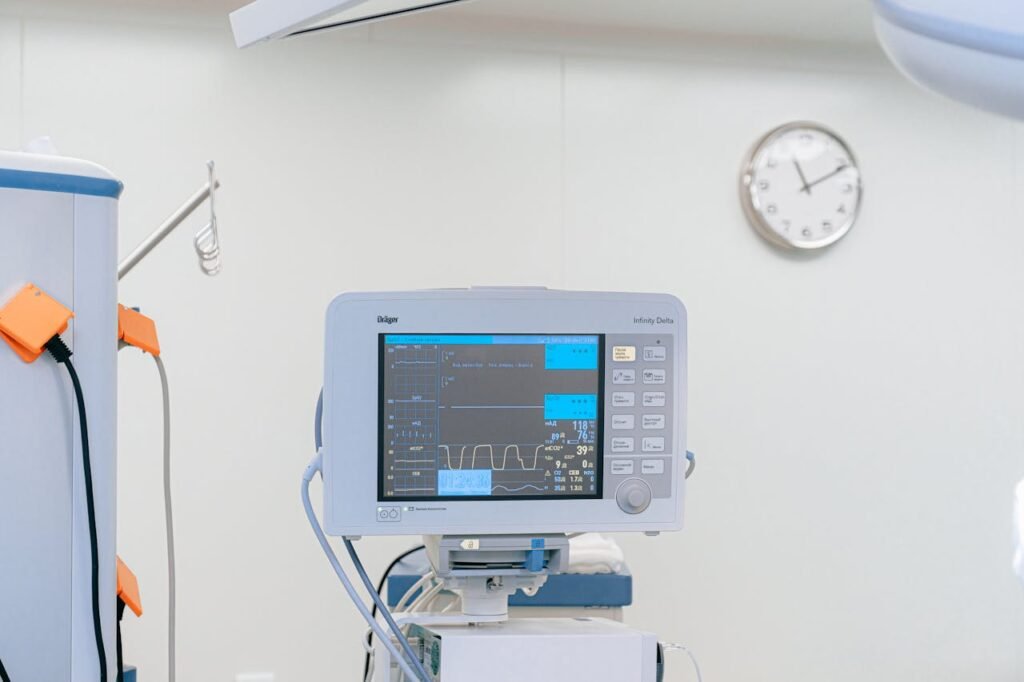
These stories aren’t about machines, wires, or electrical pulses. They’re about people. People who chose to fight. People who found hope in the hum of a small device.
EMS therapy is not magic—but it can be life-changing. It keeps muscles alive. It keeps hope alive. It opens the door to prosthetics, recovery, and dignity.
At RoboBionics, we’ve seen this transformation again and again. And we’ve learned that the real magic lies not in the technology—but in the people who use it.
What You Can Do
If you or someone you know is living with limb loss, EMS can be a quiet but powerful part of the journey. It’s not just for the tech-savvy. It’s for the brave. The tired. The hopeful.
Don’t wait for the perfect moment. Start small. Start today.
Want to learn more or try EMS for yourself?
Book a free demo with our team: https://www.robobionics.in/bookdemo
We’re here for your journey—every step of the way.



